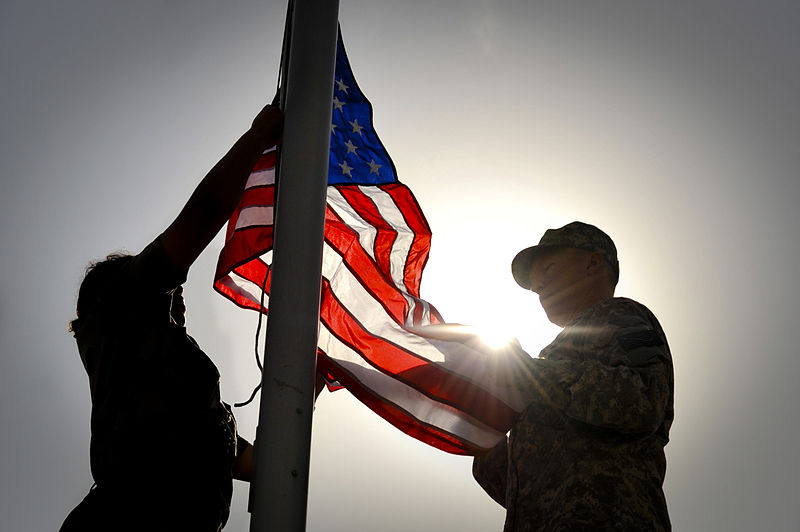 photo by Staff Sgt. Joseph Swafford (USAF)
photo by Staff Sgt. Joseph Swafford (USAF)
Event Recap: The Future of the Army
The Army has created a guide cautioning and advising soldiers to look both ways before crossing the street while playing ‘Pokemon Go’. This, according to Gen. David Barno (ret.) and Dr. Nora Bensahel, is just one example of how the U.S. Army has become too risk averse. Barno and Bensahel highlighted this issue and many more at a September 21st talk at the Atlantic Council with Brad Carson, moderated by Missy Ryan, where they launched their new report The Future of the Army.
The main issue for Barno and Bensahel is that the Army is not prepared for the “next big war.” In its current form, the Army is specialized for counter-insurgency (COIN) operations, and not for large scale conflict as it was during the Cold War. The Army is not prepared to conduct a large scale, high intensity war. They argue that the Army needs to increase its levels of heavy weaponry, train for attacks by WMDs, and learn how to survive under heavy fire, such as would be sustained in conflict with a major power like Russia or China.
Personnel
This preparation for large scale war is made more difficult by sequestration and the winding down of the wars in Afghanistan and Iraq. As these conflicts come to a close, recruiting will become more challenging. Additionally, sequestration is putting budget pressures on the Pentagon, requiring a troop drawdown. As the Army is reduced in size to just over 1 million personnel, with roughly half active duty servicemen, the Army will have to put more people in uniform into combat rather than support positions.
Another way to alleviate this loss of personnel would be fully integrating the reserves and National Guard with those on active duty. Barno and Bensahel suggest the creation of hybrid brigade combat teams (BCTs), which would combine a mix of active and reserve battalions. These would supplement BCTs consisting fully of active duty personnel, and would be deployed as medium term response units.
The final key personnel focus of the report is the continued development of Special Forces, most importantly units dedicated to providing security force assistance and training to allies. Our current system of assistance is piecemeal and much less effective than it could be. Barno and Bensahel argue for security force assistance battalions consisting of mid-career personnel. They would not only be useful for training foreign allies, but in the event of national crisis, would be instrumental in serving as a highly competent officer corps for conscripts.
Culture
In addition to personnel changes, Barno and Bensahel argue that the Army’s culture needs to change. The Army has become too risk averse. As Barno and Bensahel note, war is by its very nature a risky venture. While needlessly risking the lives of soldiers is unacceptable, if the Army believes that crossing the street is too dangerous to let soldiers do without a warning, how would it cope with a major theater war with an adversary whose weapons are more dangerous than cars?
Barno and Bensahel also say that on the whole, the Army does not reward intellectualism, stifling innovation and out-of-the-box thinking. Here they draw a distinction between the operational and institutional Army. In the field innovation is highly coveted despite being stifled back home. While senior officers see the need for this to change, middle ranking officers are resistant. In order to fix this problem, the Army needs to do a better job at getting buy-in from mid-level officers.
One way that Barno and Bensahel suggest doing this is by emphasizing civilian graduate school for officers. Due to generous Congressional funding, it would be very inexpensive for the Army to send its officers to top schools. An officer corps with broader experience would help foster this drive for innovation. However, at present it is difficult for an officer seeking promotion to attend civilian graduate school, because graduate school education tends to occur at the same time as officers are given company command, a key step towards promotion to senior commands. If officers put off or forego company command to attend school, they are less likely to be promoted to senior ranks.
Moving Forward
Between them, Barno and Bensahel have decades of experience serving in and thinking about the Army. The Army that they envision is vastly different from the COIN specialized force that we see today, and substantial changes would need to happen to get there.
This raises the question of what the United States wants its Army to look like going forward. All of the conflicts that the U.S. currently faces and every conflict that the U.S. has faced since the 1990s (excepting the two invasions of Iraq) have been low-footprint conflicts. Should the Army maintain its current COIN focus or should it become the Cold War-esque force suggested by Barno and Bensahel? How the United States chooses to answer this question will affect the Army for years to come.
The full report can be read here.





